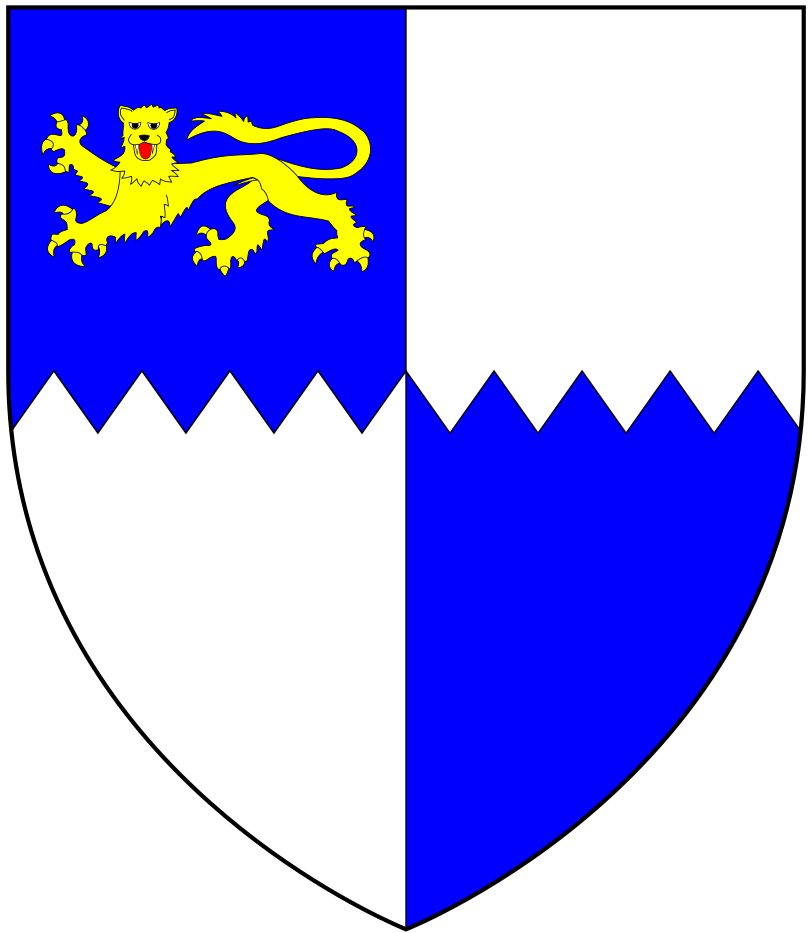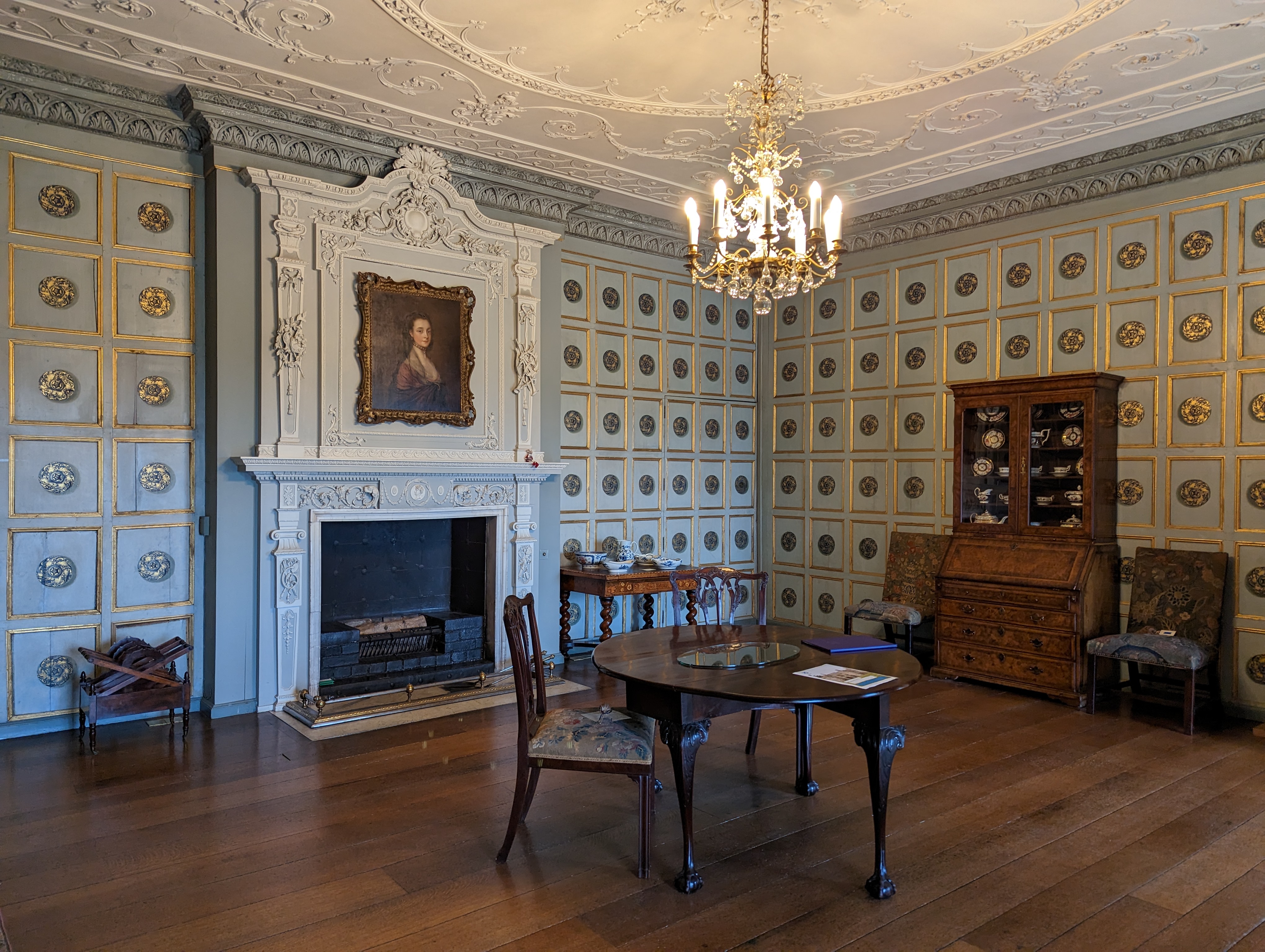|
Croft Baronets Of Croft Castle (1671)
The Croft baronetcy, of Croft Castle in the County of Hereford, was created in the Baronetage of England on 18 November 1671 for Herbert Croft, who later represented Herefordshire in Parliament. He was a member of a prominent Herefordshire family of Norman descent. The 2nd Baronet sat as Member of Parliament for Leominster, and Bere Alston. The 5th Baronet was an author. The 9th Baronet represented Herefordshire in the House of Commons, from 1868 to 1874. Croft baronets, of Croft Castle (1671) * Sir Herbert Croft, 1st Baronet (–1720) *Sir Archer Croft, 2nd Baronet (1684–1753) *Sir Archer Croft, 3rd Baronet (1731–1792) *Sir John Croft, 4th Baronet (c. 1735–1797) *Sir Herbert Croft, 5th Baronet (1751–1816) * Dr. Sir Richard Croft, 6th Baronet (1762–1818) *Sir Thomas Elmsley Croft, 7th Baronet (1798–1835) *Sir Archer Denman Croft, 8th Baronet (1801–1865) * Sir Herbert George Denman Croft, 9th Baronet (1838–1902) *Sir Herbert Archer Croft, 10th Baronet (1868–191 ... [...More Info...] [...Related Items...] OR: [Wikipedia] [Google] [Baidu] |
Croft Castle
Croft Castle is a English country house, country house in the village of Croft, Herefordshire, Croft, Herefordshire, England. Owned by the Croft family since 1085, the castle and estate passed out of their hands in the 18th century, before being repurchased by the family in 1923. In 1957 it was bequeathed to the National Trust. The castle is a Listed building, Grade I listed building, and the estate is separately listed as Grade II*. The adjacent Church of St Michael is listed Grade I. History A building has been on the site from c.1085 when the estate was established by the Croft family. and it has from this time been the home of the Croft family and Croft baronets. The Croft family were closely linked to their neighbours the Mortimers of Wigmore, Herefordshire, Wigmore and Ludlow. The Battle of Mortimer's Cross took place on Croft land nearby in 1461. It was the home of Sir John de Croft who married Janet, one of Owain Glyndŵr's daughters. In the 15th century, the Croft fami ... [...More Info...] [...Related Items...] OR: [Wikipedia] [Google] [Baidu] |
County Of Hereford
Herefordshire ( ) is a ceremonial county in the West Midlands of England, bordered by Shropshire to the north, Worcestershire to the east, Gloucestershire to the south-east, and the Welsh counties of Monmouthshire and Powys to the west. The city of Hereford is the largest settlement and county town. The county is one of the most rural in England, with an area of and a population of 187,034, giving a density of 88/km2 (228/sq mi). After Hereford (53,112) the largest settlements are Leominster (10,938), Ross-on-Wye (10,582), and Ledbury (8,862). For local government purposes Herefordshire is a unitary authority area. The centre of Herefordshire is lowland which is crossed by the River Wye and its tributary, the Lugg. To the east are the Malvern Hills, a national landscape, which straddle the boundary with Worcestershire. The south of the county contains the northern part of the Wye Valley, also a national landscape, which stretches into Wales. In the west, the ground rises t ... [...More Info...] [...Related Items...] OR: [Wikipedia] [Google] [Baidu] |
Baronetage Of England
Baronets are hereditary titles awarded by the Crown. The current baronetage of the United Kingdom has replaced the earlier, existing baronetages of England, Nova Scotia, Ireland and Great Britain. To be recognised as a baronet, it is necessary to prove a claim of succession. When this has been done, the name is entered on the Official Roll of the Baronetage. Persons who have not proven their claims may not be officially styled as baronets. This was ordained by Royal warrant (document), Royal Warrant in February 1910. A baronetcy is considered vacant if the previous holder has died within the previous five years and if no one has proven their succession, and is considered dormant if no one has proven their succession in more than five years after the death of the previous incumbent. All extant baronetcies, including vacant baronetcies, are listed below in order of precedence (i.e. date). All other baronetcies, including those which are extinct, dormant or forfeit, are on a separ ... [...More Info...] [...Related Items...] OR: [Wikipedia] [Google] [Baidu] |
Sir Herbert Croft, 1st Baronet
Sir Herbert Croft, 1st Baronet ( – 3 November 1720) was an English politician. Family Croft was the only son of the Right Reverend Herbert Croft, Bishop of Hereford and Anne Browne, the only daughter of the Very Rev. Dr. Jonathan Browne and Anne Barne Lovelace. Her half-brothers were Richard Lovelace (1618–1657) an English poet in the seventeenth century and Francis Lovelace (1621–1675), who was the second governor of the New York Colony appointed by James, Duke of York (later King James II). The great nephew of both George Sandys (2 March 1577 – March 1644), the traveller, colonist and poet, and of Sir Edwin Sandys (9 December 1561 – October 1629), an English statesman and one of the founders of the London Company, he was also the great great grandson of Cicely Wilford and the Most Reverend Dr. Edwin Sandys, an Anglican church leader who successively held the posts of the Bishop of Worcester (1559–1570), Bishop of London (1570–1576), and the Archbishop of ... [...More Info...] [...Related Items...] OR: [Wikipedia] [Google] [Baidu] |
Herefordshire (UK Parliament Constituency)
The county constituency of Herefordshire, in the West Midlands (region), West Midlands of England bordering on Wales, was abolished when the county was divided for parliamentary purposes in 1885. It was a United Kingdom constituencies, constituency of the House of Commons of the United Kingdom, House of Commons of the Parliament of England, then of the Parliament of Great Britain from 1707 to 1800 and of the Parliament of the United Kingdom from 1801 to 1885. The undivided county was represented from 1290 by two Knights of the Shire until 1832 and three thereafter. After the county was split two new county constituencies were created, the North division or Leominster (UK Parliament constituency), Leominster and the South division or Ross (UK Parliament constituency), Ross. Boundaries The constituency consisted of the historic counties of England, historic county of Herefordshire. Although Herefordshire contained a number of parliamentary boroughs, each of which elected one or two ... [...More Info...] [...Related Items...] OR: [Wikipedia] [Google] [Baidu] |
Herefordshire
Herefordshire ( ) is a Ceremonial counties of England, ceremonial county in the West Midlands (region), West Midlands of England, bordered by Shropshire to the north, Worcestershire to the east, Gloucestershire to the south-east, and the Welsh counties of Monmouthshire and Powys to the west. The city of Hereford is the largest settlement and county town. The county is one of the most rural in England, with an area of and a population of 187,034, giving a density of 88/km2 (228/sq mi). After Hereford (53,112) the largest settlements are Leominster (10,938), Ross-on-Wye (10,582), and Ledbury (8,862). For Local government in England, local government purposes Herefordshire is a Unitary authorities of England, unitary authority area. The centre of Herefordshire is lowland which is crossed by the River Wye and its tributary, the River Lugg, Lugg. To the east are the Malvern Hills, a National Landscape, national landscape, which straddle the boundary with Worcestershire. The south ... [...More Info...] [...Related Items...] OR: [Wikipedia] [Google] [Baidu] |
Leominster (UK Parliament Constituency)
Leominster was a United Kingdom constituencies, parliamentary constituency represented until 1707 in the House of Commons of England, then until 1801 in that of House of Commons of Great Britain, Great Britain, and finally until 2010, when it disappeared in boundary changes, in the Parliament of the United Kingdom. From 1295 to 1885, Leominster was a parliamentary borough which until 1868 elected two Member of Parliament (United Kingdom), Members of Parliament by the Plurality-at-large voting, bloc vote system of election. Under the Reform Act 1867 its representation was reduced to one Member, elected by the first past the post system. The parliamentary borough was abolished under the Redistribution of Seats Act 1885, and the name was transferred to a new county constituency. History Aside from two brief periods of Liberal representation, Leominster was a mostly safe Conservative seat from 1910, although sometimes by narrow majorities over the Liberal Party. The Labour Party ... [...More Info...] [...Related Items...] OR: [Wikipedia] [Google] [Baidu] |
Bere Alston (UK Parliament Constituency)
Bere Alston is a village in West Devon in the county of Devon in England. It forms part of the civil parish of Bere Ferrers. The village is reported to have a population of 2,259 (2021 Census) History and geography With a population of about 2,259 (2021 Census), the village lies in the Bere peninsula, between the rivers River Tamar, Tamar and River Tavy, Tavy. Its origins lie in the once thriving local mining industry, including silver and lead, and the market gardening sector. At one time, the mainline trains to London would stop at the village to pick up locally grown produce destined for the capital. Bere Alston is about 12 km north of the centre of Plymouth as the crow flies, but the road trip requires either a long detour via Tavistock or else negotiating narrow lanes and a narrow bridge. Trains still run to Bere Alston railway station on the picturesque Tamar Valley Line between Plymouth and Gunnislake, and trains reverse at this station. There has been discussion of ... [...More Info...] [...Related Items...] OR: [Wikipedia] [Google] [Baidu] |
British House Of Commons
The House of Commons is the lower house of the Parliament of the United Kingdom. Like the upper house, the House of Lords, it meets in the Palace of Westminster in London, England. The House of Commons is an elected body consisting of 650 members known as members of Parliament (MPs), who are elected to represent constituencies by the first-past-the-post system and hold their seats until Parliament is dissolved. The House of Commons of England began to evolve in the 13th and 14th centuries. In 1707 it became the House of Commons of Great Britain after the political union with Scotland, and from 1801 it also became the House of Commons for Ireland after the political union of Great Britain and Ireland. In 1922, the body became the House of Commons of the United Kingdom of Great Britain and Northern Ireland after the independence of the Irish Free State. Under the Parliament Acts 1911 and 1949, the Lords' power to reject legislation was reduced to a delaying power. The gove ... [...More Info...] [...Related Items...] OR: [Wikipedia] [Google] [Baidu] |
Sir Archer Croft, 2nd Baronet
Sir Archer Croft, 2nd Baronet (c. 2 March 1683 – 10 December 1753), of Croft Castle, near Leominster, Herefordshire, was a British politician who sat in the British House of Commons, House of Commons from 1722 to 1734. Early life Croft was the eldest son of Sir Herbert Croft, 1st Baronet and his wife Elizabeth Archer, daughter of Thomas Archer, MP of Umberslade, Warwickshire. He matriculated at New College, Oxford on 15 April 1702. In 1720 he succeeded to the Croft baronets, baronetcy on the death of his father on 3 November. He married Frances Waring, daughter of Brigadier-General Richard Waring of Dunston Park, Berkshire on 10 January 1723. Career Croft stood unsuccessfully for Leominster (UK Parliament constituency), Leominster at the 1713 British general election. He was returned as Member of Parliament for Leominster at the top of the poll at the 1722 British general election. On the death of King George I in 1727 he expected Walpole to be ousted by Sir Spencer Compt ... [...More Info...] [...Related Items...] OR: [Wikipedia] [Google] [Baidu] |







